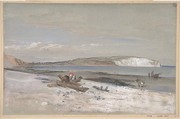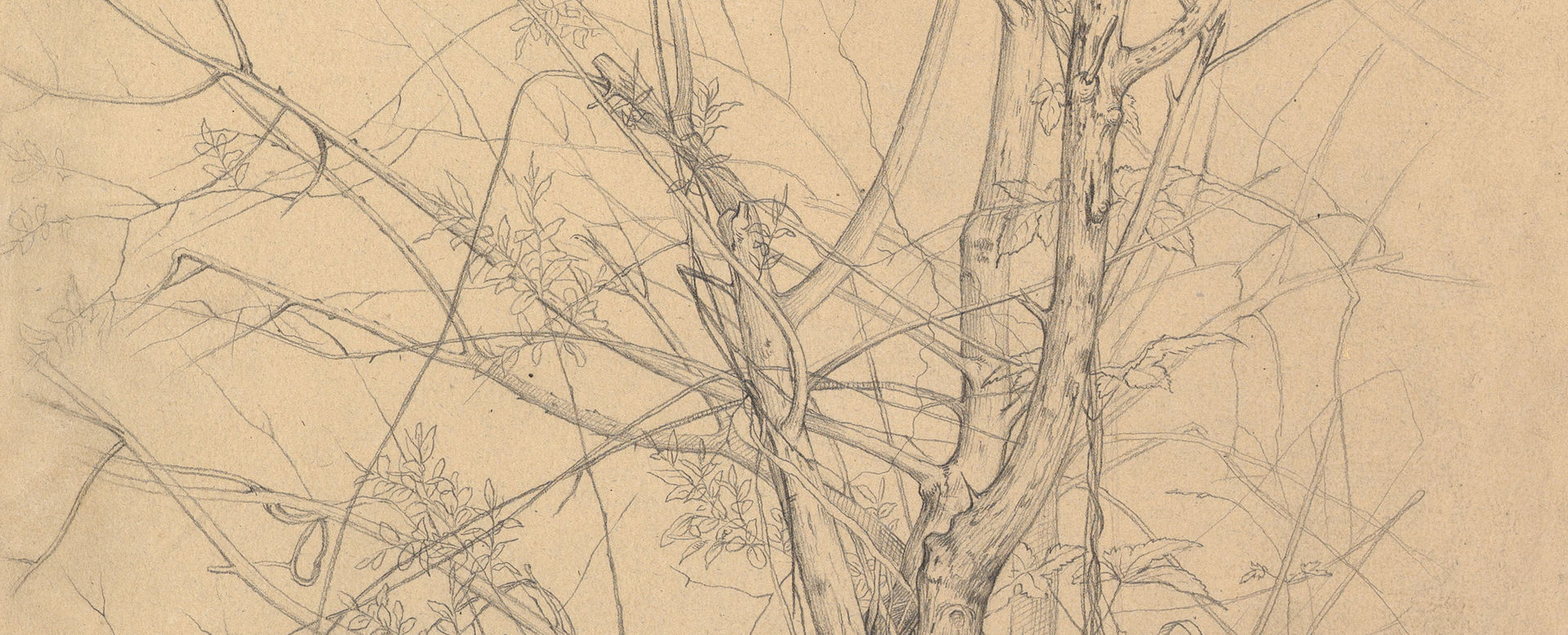Culver Cliff, Isle of Wight
William Dyce British, Scottish
Not on view
Dyce is best known for meticulously-rendered religious subjects that earned him the nickname "the British Nazarene." Completely different in character, this watercolor was made for his own pleasure in the summer of 1847, during a stay on the Isle of Wight to paint "Neptune Resigning his Empire of the Seas to Britainnia" for the royal residence of Osborne House. Turning his attention from allegory to the physical realities of the English coast, Dyce represents men collecting wood from a wrecked boat, and fishermen carrying bundles across Sandown Bay, with the distinctive chalk face of Culver Cliff standing out in the distance.
Due to rights restrictions, this image cannot be enlarged, viewed at full screen, or downloaded.



